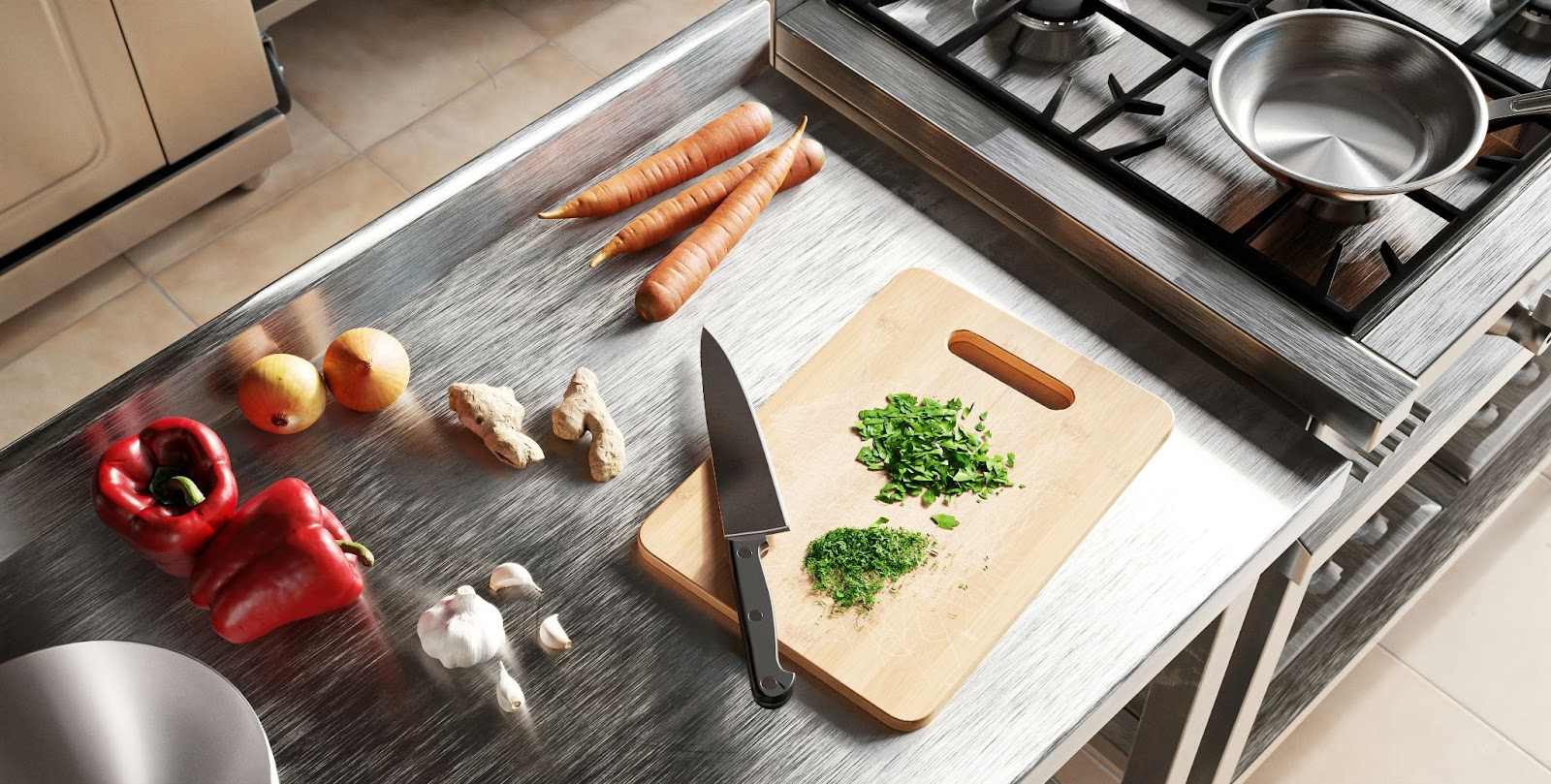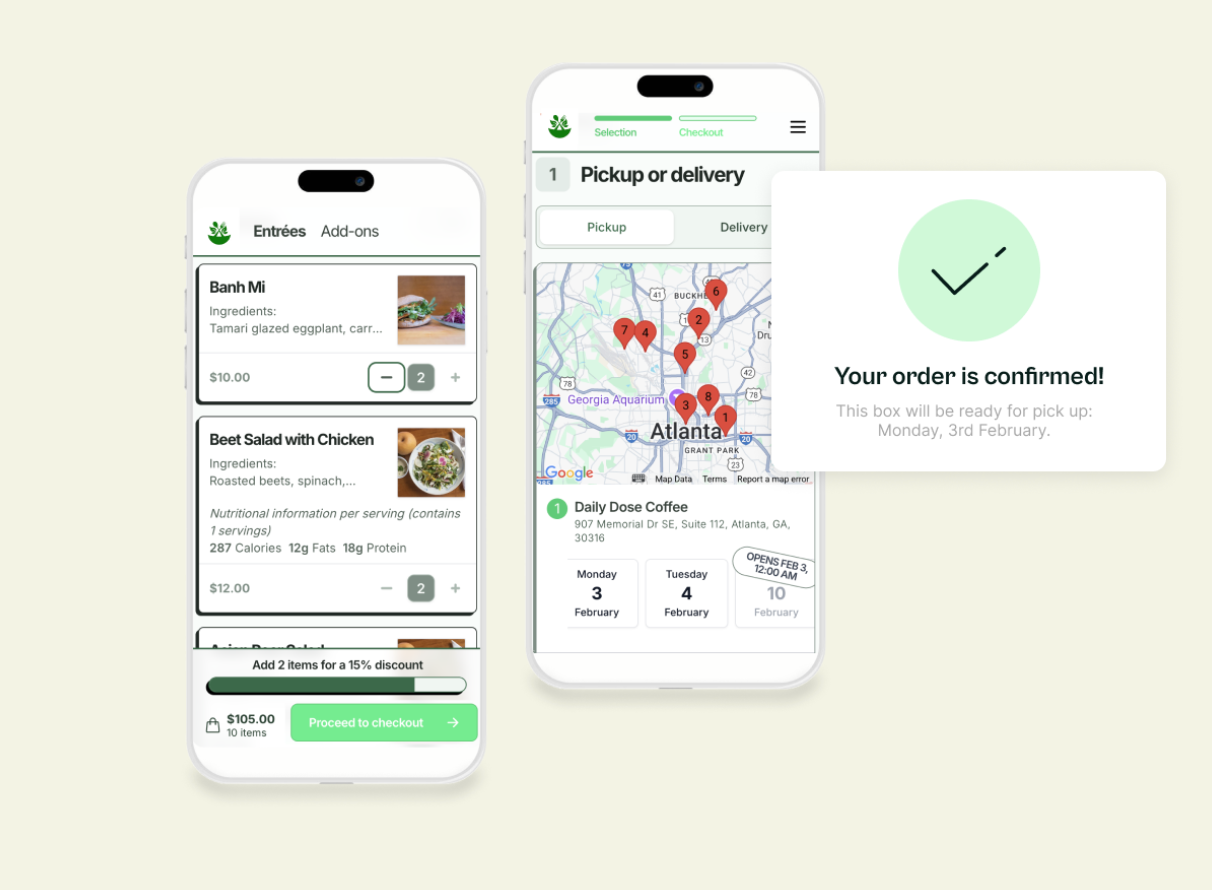You got into this business because you love food and have a passion for helping people eat well. But now, you might feel more like a data entry clerk than a chef. Juggling orders via text message, tracking payments in a labyrinth of spreadsheets, and manually planning delivery routes—it's exhausting, and it's holding you back.
Here's the data that changed everything: meal prep operators using dedicated automation platforms report 40% time savings on administrative tasks and 25% fewer order errors compared to manual systems.
As Hava Volterra from Parsley observes: "Most of the businesses I see out there are using spreadsheets and I always wonder how they managed to get along with that. And it's clear to me that they're definitely losing a lot of time and probably losing money doing that."
The meal prep industry is projected to reach $64.27 billion by 2030. The opportunity is massive, but scaling isn't about working harder. It's about working smarter. The difference between a thriving business and a stagnant one often comes down to one thing: technology that actually works for meal prep operators.
This isn't another sales pitch. This is your strategic guide to the complete technology ecosystem—from the software that runs your storefront to the hardware that streamlines your kitchen.
To make sense of the options, think of your business operations in four key areas. Each one presents a unique opportunity for automation that saves time, reduces errors, and directly impacts your bottom line.

Your website is more than a menu; it's your 24/7 salesperson, order taker, and customer service hub. Clunky, manual systems create friction for customers and administrative headaches for you.
Melanie Geist experienced this transformation firsthand: "I really needed a way to manage that aspect of the business more efficiently. And that was going to allow me to grow without spending too much time on it... As soon as people started using the platform, they responded, 'Oh, it's streamlined.' And from there, I think people felt a lot more comfortable referring their friends."
What data-driven operators look for:
Seamless Online Ordering: Your customers expect a smooth, intuitive checkout process. Purpose-built platforms handle everything from one-time purchases to complex subscriptions without hiccups.
Subscription Flexibility: The lifeblood of many meal prep businesses is recurring revenue. Your software must allow customers to easily pause, skip, or change their subscriptions. If they have to email you for every little change, you're creating a bottleneck and risking churn.
A Unified Customer View (CRM): Imagine knowing every customer's order history, dietary preferences, and communication record in one place. A Growth CRM moves beyond simple order taking, allowing you to personalize offers, track feedback, and build lasting relationships.
Your kitchen is where the magic happens, but it can also be a source of inefficiency and inconsistency. While you focus on creating amazing recipes, technology can handle the repetitive, process-driven tasks.
Emerging tech proven to work:
Smart Ovens & Equipment: Connected appliances can be pre-programmed with cooking times and temperatures for specific menu items, reducing human error and ensuring perfect results every time.
Robotic Prep Assistants: While full-scale robotics might be a future goal, automated choppers, mixers, and portioning tools are accessible now. They free up your team to focus on more complex culinary tasks.
Digital Recipe & Prep Lists: Software that automatically generates prep lists and recipe cards based on incoming orders eliminates guesswork and minimizes mistakes. This ensures your kitchen team knows exactly what to prep and cook each day.

Food waste is a silent profit killer. Every ingredient that gets thrown out is money down the drain. Manual inventory tracking is often a guessing game, leading to over-ordering or last-minute shortages.
This is where AI and data become your most valuable assistants. By analyzing past sales data and upcoming orders, smart inventory systems can predict exactly how much you need to buy. Research shows that AI can help reduce food waste by up to 20% by optimizing your purchasing and supply chain.
This isn't just about saving money—it's about building a more sustainable and resilient business.
You can have the best food and the slickest website, but a late or incorrect delivery can ruin the entire customer experience. Competing with the on-demand giants means providing a professional and reliable delivery service.
Manually planning routes on Google Maps is time-consuming and inefficient. Modern logistics software leverages the same AI-powered route optimization used by major delivery platforms. It automatically plans the most efficient routes for your drivers based on all your drop-off locations, saving fuel, time, and labor costs.
Pairing this with customer-facing tools like real-time delivery tracking provides the transparency and peace of mind that today's consumers expect.
Feeling overwhelmed by the options? Use this data-backed framework to cut through the noise and make a confident decision based on your unique needs.
Before you look at any software, look at your business. Where are you losing the most time? Is it manually updating orders? Answering repetitive customer questions? Wasted food? Write down your top three biggest operational headaches.
Technology is an investment, not an expense. Instead of asking "What does it cost?" ask "What will it return?" If a platform costs a few hundred dollars a month but saves you 10 hours of administrative work and reduces food waste by 15%, the ROI is clear.
Based on your bottleneck audit, create two lists. Your "must-haves" are features that solve your biggest problems right now (e.g., automated subscription management). "Nice-to-haves" are features that would be great down the road (e.g., advanced AI-powered marketing). Don't get distracted by shiny objects.

Choose a system that can grow with you. Will this platform support you when you have 500 customers instead of 50? Does it integrate with other tools you rely on, like delivery services or accounting software?
A true all-in-one solution is ideal, as it prevents the headache of trying to sync multiple, disconnected systems.
When you start demoing platforms, use your "must-have" list as a scorecard. Rate each solution on how well it solves your core problems. Pay close attention to the support and onboarding process—the best software is useless without a team to help you implement it successfully.
Finding a partner with a dedicated Launch Accelerator program can be the difference between a smooth transition and a frustrating one.
Megan Scott of Planted Table shares her transformation: "Pre-Bottle was a nightmare because we were using a WordPress subscription plugin... It was an awful user experience. It was an awful experience on my end... [After switching] it was a game changer. Personally, it makes my job so much easier because things that I was doing manually, I didn't have to do manually anymore."
She continues: "The texting feature is such a game changer. Because I could be anywhere... The second someone has a message for me, I respond instantly. And if you look at our Yelp reviews, one of the most common things you see there is great customer service. And that's really due to this messaging feature."
The data is clear: operators who embrace proven automation technology achieve 3x faster growth than those stuck in manual processes. Here's how to make the transition:
Week 1: Complete your bottleneck audit using the framework above
Week 2: Research and demo 2-3 platforms that address your top pain points
Week 3: Calculate the true ROI of your top choice vs. continuing with manual processes
Week 4: Commit to implementation with proper onboarding support
1. Isn't this kind of technology too expensive for a small business?
It's a common concern, but shift your mindset from cost to investment. The time you save on administrative tasks can be reinvested into marketing, recipe development, and customer service—activities that actually grow your business. Many platforms also save you money by consolidating tools you're already paying for and reducing costly errors and food waste.
2. I'm a chef, not a tech expert. How difficult is this to set up and use?
The best platforms are designed for business owners, not IT professionals. Look for solutions that pride themselves on being intuitive and user-friendly. More importantly, prioritize companies that offer hands-on support. A dedicated launch coach or support team that understands the meal prep industry can guide you through every step.
3. My current system of spreadsheets and texts is working okay. Why change?
"Working okay" is the enemy of growth. A manual system is a ceiling on your business. It prevents you from scaling because you can only handle so many orders before things start breaking. Automation removes that ceiling, allowing you to serve more customers without sacrificing quality or your sanity.
4. How do I know which features I really need?
Go back to the 5-step framework, specifically Step 1: Audit Your Bottlenecks. The features you really need are the ones that solve your most painful, time-consuming problems. Don't be sold on a long list of features you'll never use. Focus on the core solutions that will have the biggest impact on your day-to-day operations and profitability.
Technology isn't about replacing the human element of your business. It's about liberating you from the mundane tasks that keep you trapped in the business rather than working on the business.
When you automate order management, you have more time to perfect your next menu. When you automate delivery routing, you have more time to connect with your customers. By embracing the right technology, you can finally transition from being the chief cook and bottle-washer to the CEO—a strategic leader focused on quality, innovation, and growth.
As Will Schreiber of Bottle notes: "Our biggest competitor isn't another software platform as much as it's the status quo... You're fighting people getting takeout from a restaurant or cooking food themselves... And to beat the status quo, you need to be excellent at the operations."
Ready to move beyond the spreadsheet? Explore our Launch Accelerator program and discover how proven meal prep operators are using technology to scale their businesses while maintaining the quality that made them successful in the first place.
The meal prep industry is evolving fast. The operators who embrace proven automation strategies today will lead the market tomorrow. Don't let manual processes hold back your passion.
Book your free strategy session with a meal prep growth advisor. We’ll discuss:



Book a call with a Bottle Meal Prep Advisor